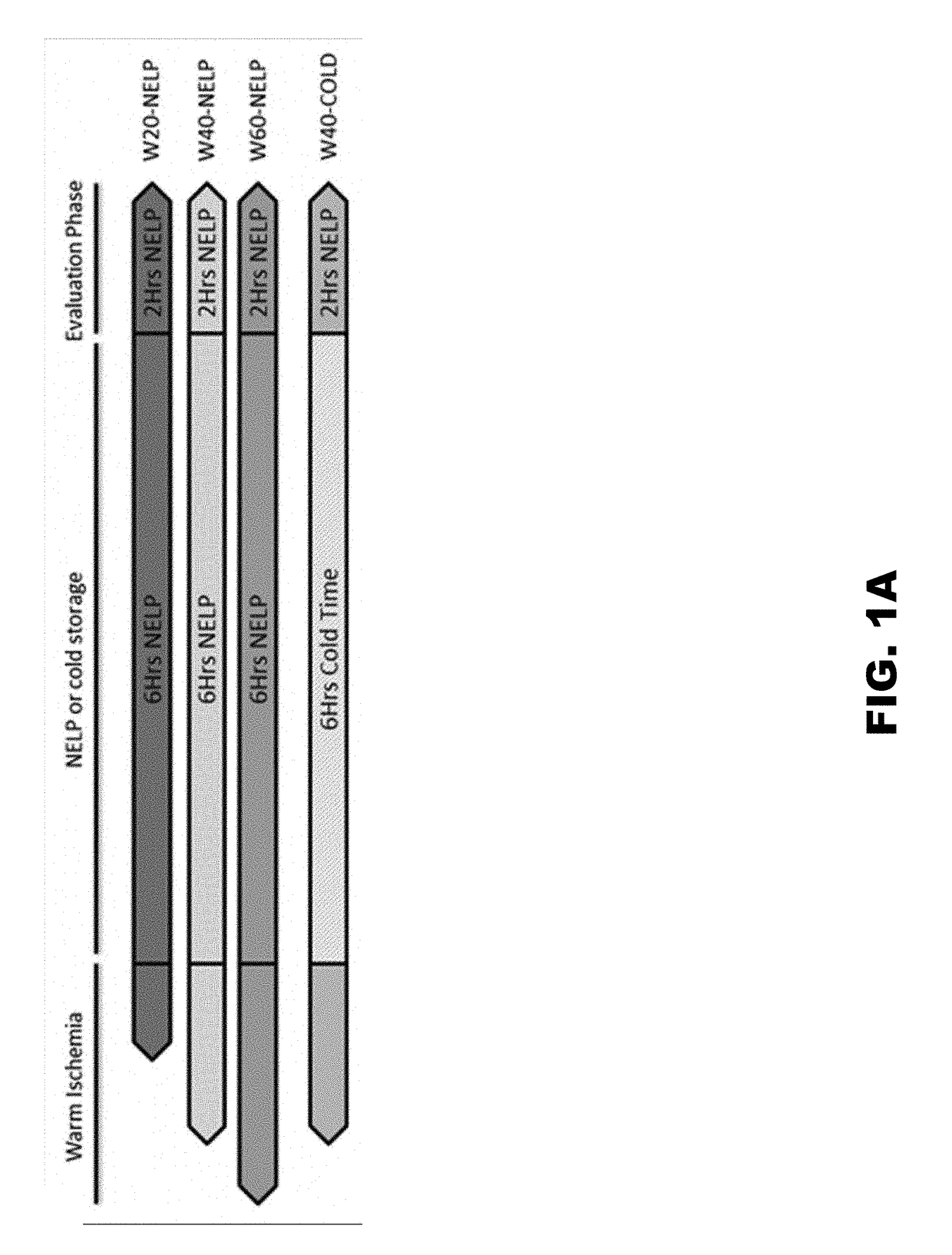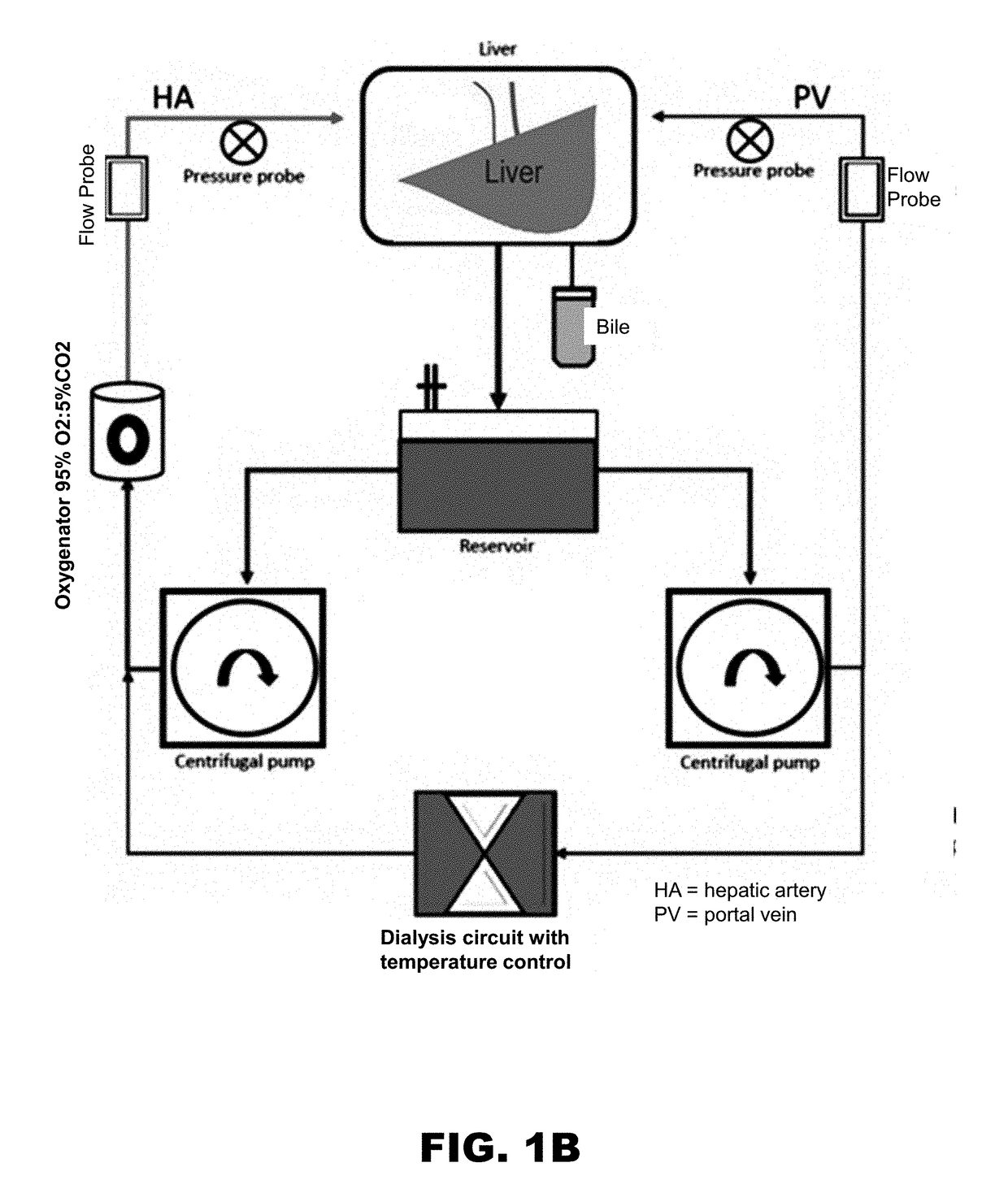Systems and methods for normothermic extracorporeal organ perfusion
a technology of extracorporeal organs and systems, applied in the field of systems and methods for normothermic extracorporeal organ perfusion, can solve the problems of suboptimal organs being more susceptible to ischemia, morbidity of potential transplant recipients, and depletion of grafts
- Summary
- Abstract
- Description
- Claims
- Application Information
AI Technical Summary
Benefits of technology
Problems solved by technology
Method used
Image
Examples
example 1
mic Extracorporeal Liver Perfusion (NELP) for Donation after Cardiac Death Livers
[0117]This example illustrates how sub optimal livers that are obtained after cardiac death, and would otherwise result in failed transplants, may be used successfully, after Normothermic extracorporeal liver perfusion, with the perfusion system described.
[0118]Female land race / farm pigs (30-35 kg) were purchased from Oak Hill Genetics, IL. All animals were housed and maintained in accordance with the National Resource Council guidelines. All experimental procedures and protocols were approved by the Animal Studies committee and Department of Comparative Medicine at the Washington University School of Medicine in St Louis. They were given access to food and water ad libitum and were restricted from solid food but not water 12 hours before the operation. Animals were assigned randomly to 1 of 4 groups, with 3 animals per group: 20-minute warm ischemia group (W20-NELP), 40-minute warm ischemia group (W40-...
example 2
ormothermic Liver Perfusion System
[0121]The circuit was primed with 700 mL or 1,500 mL of saline and 10,000 U heparin. Blood was added (1100±150 ml) to the circuit after passing through a leukocyte filter (Pall Corporation, Port Washington, N.Y.). The NELP circuit was run for 30 minutes to allow the dialyzer to achieve equilibrium prior to placement of the liver onto the system (Table 1). Table 1 shows blood gas analysis and chemistry at the beginning of the evaluation phase in the study groups (mean±SD). The dialysis machine was connected to the system 30 minutes before connecting the livers to the machine perfusion. The dialysis machine insured stabilized blood chemistry, pH and electrolytes throughout the perfusion sessions.
[0122]Before docking onto the system, the liver was flushed with 2 L of saline via the hepatic artery and portal vein. The centrifugal pumps provided constant flow of blood to the hepatic artery and the portal vein with flows maintained at 0.5±0.1 L / min and 1....
example 3
t of the Liver
[0123]This example shows data of assessment of the liver from the experimental design described in Example 1
[0124]Samples for blood gas, glucose, and electrolyte monitoring were taken hourly from both the arterial and venous limbs of the circuit simultaneously. The oxygen content (C) was calculated using the formula: Ca / v02=Hb×1.39×Sa / vO2. Fick's equation for oxygen extraction ratio was then applied: (CaO2−CvO2) / CaO2. Hourly measurements of aspartate transaminase AST, alanine transaminase (ALT), and total bilirubin were made. Liver biopsies were taken, preserved in 10% formalin, and sent for hematoxylin and eosin (H&E) staining. A pathologist independently reviewed the slides for hepatocyte morphology, necrosis, and level of IRI. Bile production was assessed every hour and was evaluated for concentrations of LDH, ALP, bicarb, glucose as well as pH. INR (CoaguChek XS system; Roche diagnostics, Germany) and lactate (Lactate plus; Nova biomedical, UK) levels were also mea...
PUM
 Login to View More
Login to View More Abstract
Description
Claims
Application Information
 Login to View More
Login to View More - R&D
- Intellectual Property
- Life Sciences
- Materials
- Tech Scout
- Unparalleled Data Quality
- Higher Quality Content
- 60% Fewer Hallucinations
Browse by: Latest US Patents, China's latest patents, Technical Efficacy Thesaurus, Application Domain, Technology Topic, Popular Technical Reports.
© 2025 PatSnap. All rights reserved.Legal|Privacy policy|Modern Slavery Act Transparency Statement|Sitemap|About US| Contact US: help@patsnap.com



